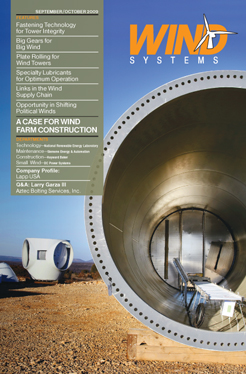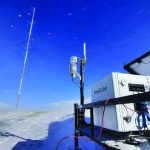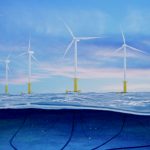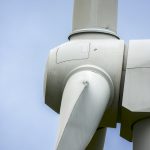In the small wind industry you will often encounter the sentiment that you should buy the biggest tower you can afford in order to maximize the total energy harvested from the system. This is true, in a sense, and I personally believe that every homeowner with enough space and wind should be allowed to erect as tall a tower as they require to get into good wind, free of the approval processes required in most parts of the country.
Of another mind are the proponents of a new batch of wind turbines designed to harvest wind energy from atop much smaller towers. These are small home-size systems, typically sold on shorter, tilt-up monopole towers, and offering a slew of new technologies designed to harvest energy from previously discounted potential sites such as urban rooftops, commercial centers, or anomalous micro-topographies that allow for the harvest of canyon flows or other natural wind tunnels. I advocate this type of growth in small wind, even though I realize the limitations that short towers and turbulent sites place on any given project’s total production due to certain realities. These include the amount of power available in the wind, and the inefficiencies of the systems converting that power into useful energy.
As an advocate of small wind, I believe that it can truly make a difference, but I also choose to maintain a healthy sense of skepticism whenever I learn of new methods for harvesting wind power. Some seem incredibly outlandish at first, such as the possibility of using roof-mounted turbines. This has actually been studied, and it can be done with vibration and noise remaining within tolerable limits, but energy production will suffer. The energy produced is all that really matters, and each project has a different measure of success, making the classical payback scenario a secondary consideration for some.
In the ideal case, every small wind turbine should be mounted on a tilt-up, monopole, hydraulically-operated tower that is designed to work specifically with the turbine to which it is mated, and the whole rig should be installed and regularly maintained to the manufacturer’s specifications by properly trained and qualified personnel. The turbine owner should have a reasonable expectation of energy production going into the project, as well as a means of assessing actual production in real time once it is commissioned. Most importantly, it should be easier than it now is to obtain zoning approval.
While there are legitimate concerns about safety that drive some of these zoning laws, today’s small wind power systems are safer and more reliable than ever before. As long as the systems are purchased from a reliable manufacturer/representative, and then mounted and maintained by a certified professional, they should continue to provide clean, safe electricity from a free fuel source for decades.
The reality, though, is that there’s a large market demand for personal wind power, even in areas where the ideal is difficult to reach. Do we ignore this segment of the market while steadfastly focusing on the ideal? It gets more challenging when we add to the equation restrictive zoning laws, “not in my backyard”—or NIMBY—property owners, and sometimes-litigious environmental groups. Yet demand continues to rise.
Small wind is here to say, and in the coming years we’ll see it being used in ways and places never before considered. This will be achieved by better blade and equipment designs, R&D efforts, lighter and more-durable materials, and the ingenuity of the professionals who mount, service, and maintain these systems. We will probably see some models that are doomed to failure along the way, but the end result will be improved small-scale power production for residential and other applications.
At present small wind turbines are available from a number of manufacturers, and via widely differing distribution networks. They come in all sizes, and with tower heights ranging from 20 to more than 150 feet. The market is currently hungry for more options, lower costs, and increased reliability, so designers are rushing to fill that demand. In addition to the power independence these systems provide to end users, this situation also offers great opportunity to those capable of dreaming up the next big thing in small wind equipment design. I plan to share more insights into this exciting emerging industry in future installments of this column.


































